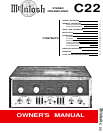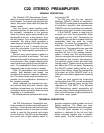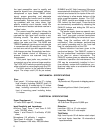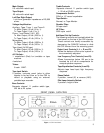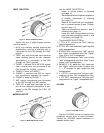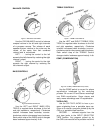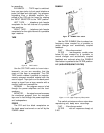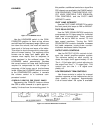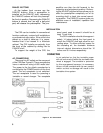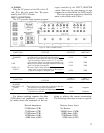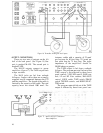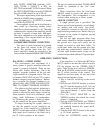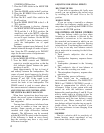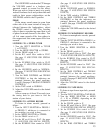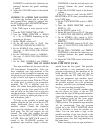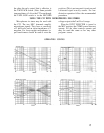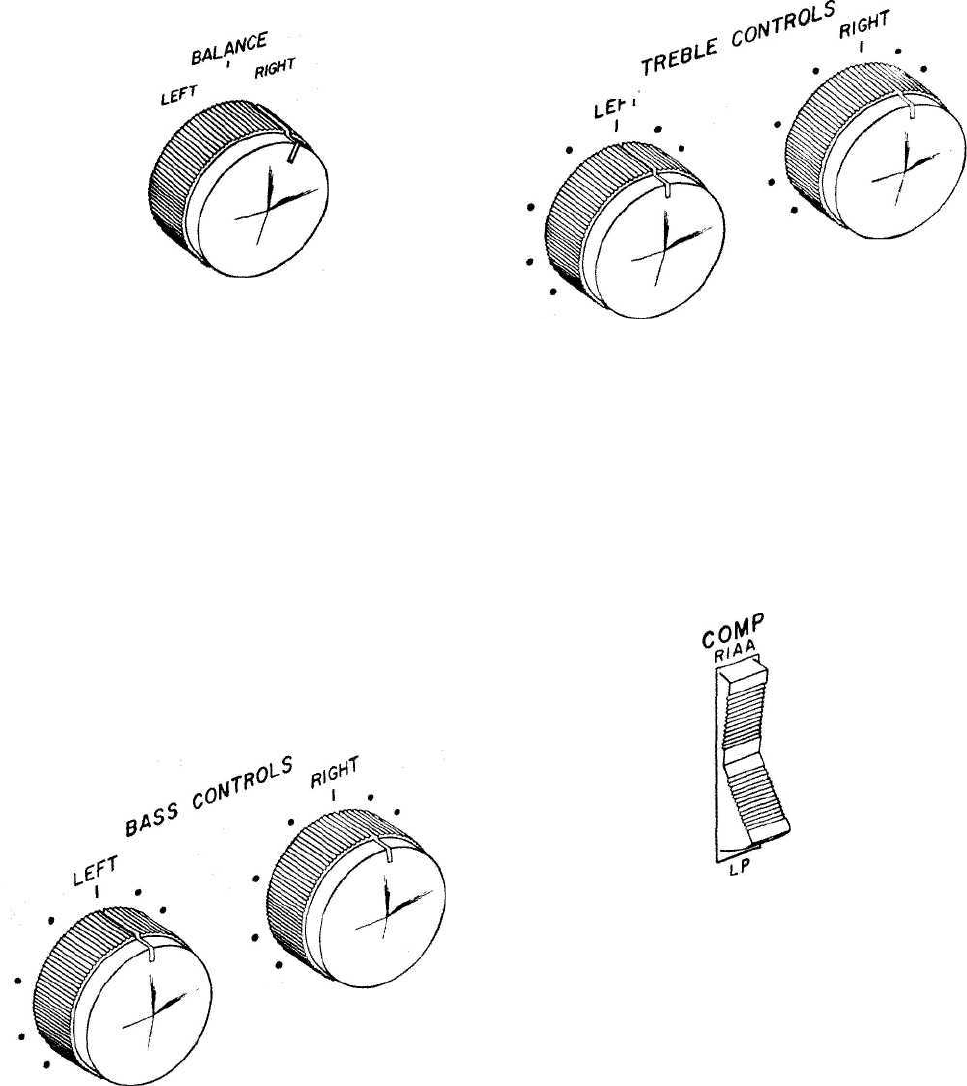
BALANCE CONTROL
TREBLE CONTROLS
Figure 5. BALANCE CONTROL.
Use the C22 BALANCE control to balance
unequal volume in the left and right channels
of a program source. The volume of each
speaker system relative to the other can be
varied, at the same time their combined
volume level is maintained.
LEFT . . . turning the control to the left
accents the left channel by reducing the right
channel output.
RIGHT . . . turning the control to the right
accents the right channel by reducing the
left channel output.
BASS CONTROLS
Figure 6. BASS CONTROLS.
Use the LEFT and RIGHT BASS CON-
TROLS to regulate bass loudness to the left
and right speakers, respectively. Clockwise
rotation increases bass loudness; counter-
clockwise rotation decreases bass loudness.
Each switch step of the BASS control changes
bass loudness approximately 4 db.
Figure 7. TREBLE CONTROLS.
Use the LEFT and RIGHT TREBLE CON-
TROLS to regulate treble loudness to the left
and right speakers, respectively. Clockwise
rotation increases treble loudness; counter-
clockwise rotation decreases treble loudness.
Each switch step of the TREBLE Control
changes treble loudness approximately 4 db.
COMP (COMPENSATION)
Figure 8. COMP (COMPENSATION) switch,
Use the COMP switch to correct for phono
equalization introduced by the recording
process. All current LP and Stereo recordings
use RIAA equalization. Some stereo and
early mono recordings use LP equalization.
TAPE JACKS
Use the C22 TAPE JACKS to hear a pro-
gram originating from a portable tape ma-
chine or to record a program picked up by the
C22 on a portable tape machine.
RECORD ... . connects signals from the
rear tape jacks to the INPUT SELECTOR
TAPE position. Any program picked up by
the C22 is connected to the portable machine
5



